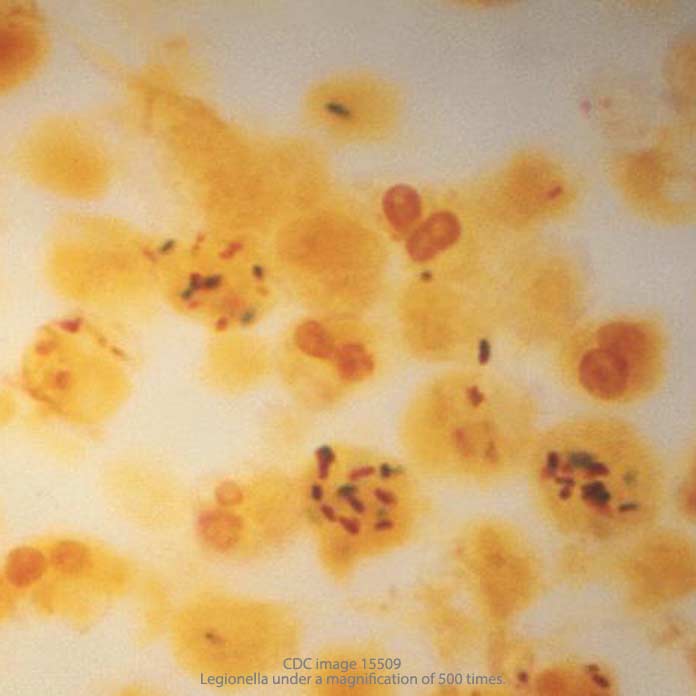Two patients admitted to the cardiac unit at the University of Washington Medical Center (UWMC) in late August were diagnosed with Legionnaires’ disease, according to officials at Public Health – Seattle & King County (1). One of the patients was treated and released. The other, a resident of Benton County, has subsequently died of complications from the severe pneumonia caused by Legionnaires’ disease.

When the first case was reported on August 26th, officials stated that the patient could have been exposed to the dangerous Legionella pneumonia bacteria either at the hospital or in the community. However, the Legionnaires’ disease diagnosis of a second patient admitted to the UWMC cardiac unit at the same time has prompted a thorough investigation:
“UWMC has hired a specialist to examine the hospital’s heating, ventilation and air-conditioning systems, said Meredith Li-Vollmer, a spokeswoman for public health.” (1)
Hospital-acquired Legionnaires’ Disease
Legionnaires’ disease is a severe pneumonia that is caused when people inhale or aspirate water vapor that is contaminated with Legionella bacteria. These bacteria proliferate in poorly maintained heating / cooling systems, fountains / water features, cooling towers, and hot tubs. When such water systems are carefully monitored, tested, and maintained, however, Legionnaires’ disease is highly preventable.
Although legionellosis respiratory infections typically are not dangerous for healthy people, they pose a very serious threat to people who are over 50, are immune-compromised, are smokers, and / or have underlying medical conditions such as cardiac disease, cancer, respiratory disease / COPD, or diabetes. When Legionnaires’ disease occurs in a healthcare environment like UWMC’s cardiac unit, it can be fatal in up to 50% of cases. When this happens, the family may have a wrongful death claim.
For this reason, hospitals and other healthcare providers should be cognizant of the procedures and protocols necessary to safeguard their care environments from Legionella contamination. Various recommendations and best practices have been published by OSHA, which offers an eTool to help industrial hygienists recognize and control Legionnaires’ disease (2). Other processes have been put in place by the Joint Commission, Environment of Care Standards (2008, November 24) (3) and by the Centers for Disease Control and Prevention (CDC) (4).
Sources:
- Aleccia, JoNel. “Legionnaires’ disease blamed for death at UW Medical Center.” The Seattle Times. Web. 9 Sept. 2016.
- “Healthcare Wide Hazards: Legionnaires’ Disease.” Occupational Safety & Health Administration. Web.
- “Environmental Care: Utility System and Acquired Illness.” Joint Commission, Environment of Care Standards. Web. 24 Nov. 2008.
- “Patient Facts: Learn More about Legionnaires’ disease.” Centers for Disease Control and Prevention (CDC). Web. 27 Jun. 2008.